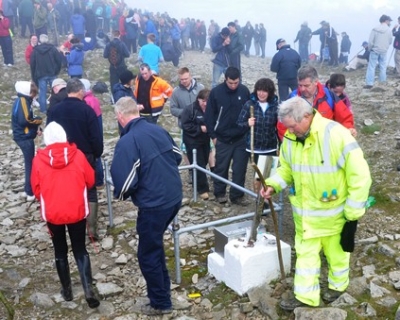Making Places Holy
What makes a place holy? What are the features, criteria or origins surrounding a space that we use to decided on its sacredness? How does the origins of a place relate to its contemporary form? These are some of the questions that define the explorations of holy places.
The first point to consider is that the idea of a sacred place is based on the concept that the holy or spiritual can become emplaced or embodied in a particular location. The spiritual, ethereal or otherworldly spheres are manifest or at least more easily accessed in these spaces, which therefore mark them out from the rest of the world. Although, I’ve previously written on the idea that this demarcation of sacred and secular spaces is not as strict as previously thought, there are still numerous locations across the world that are considered different and special.
In many cases, the origin of a holy place lies in some event or intervation. A significant episode in the history of a religion occurred there (Jerusalem in the Abrahamic religions), a divine figure was known to have been there, a saintly individual lived there or an apparition or miracle happened there. Through such elements a place is given its sacred credentials.

St Patrick’s Bed, Croagh Patrick, July 2012: Although the origin of Croagh Patrick as a holy mountain is because of the stories that St Patrick spent Lent on the Reek, its contemporary role lies in the continuation of worship and practices over the centuries.
However, it is the practices at these sites and the venerations there that sustain these locations as holy places. While the genesis of such sites may be attributed to the divine or sacred realm it is human activities that ensure their continuation. In visiting holy places, in treating them as a distinct special spaces and by engaging in specific rituals at these sites, people are making and re-making these places as scared spaces. Individuals, communities and religious organisations, therefore, have a central role in the creation and maintenance of holy spaces.
This interpretation centres on a core idea of human geography, that people and places define each other. While there maybe be some otherwordly origins to these sites, it is the actions, ideas and believes of humans, sometimes over many centuries, that ensure the continued presence of these spaces in the landscape.
Suggested Readings:
Belhassen, Y., Caton, K. and Stewart, W.P. 2008. The Search for Authenticity in the Pilgrim Experience. Annals of Tourism Research, 35 (3), pp. 668–689.
Hughes, J. D. and Swan, J. 1986. How Much of the Earth Is Sacred Space? Environmental Review: ER, 10 (4), pp. 247-259.
Kong, L., 2001, ‘Mapping ‘new’ geographies of religion: politics and poetics in modernity’, Progress in Human Geography, 25 (2), 211–233.
